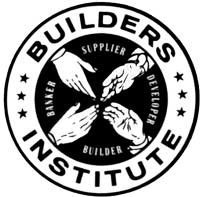
Westchester County was not always the affluent suburban landscape it is today. The county evolved from its Native American roots into small population centers and farms of the 17th and 18th centuries, growing into large urban centers, and finally, the suburbs that symbolize 20th Century America.
At the beginning of the 21st century, Westchester stands as a bustling county of nearly one million people that is proud of its history and its place in the American story. Known for its grand, multimillion-dollar mansions and the historic homes found in its posh communities such as Scarsdale, White Plains, Chappaqua and Brewster, Westchester’s housing stock also includes many single-family homes, high-rise apartments, townhomes and duplexes that were built following World War II’s housing boom.
Founded for Education & Advocacy
Fast forward two decades to the 1970s and 1980s: Rental units weren’t profitable, so to encourage individual unit ownership, some of the area's rental housing was converted to cooperatives. In 1979, the Cooperative and Condominium Advisory Council (CCAC) was formed to serve as a resource for elected board members of those cooperatives and the condominiums in Westchester. Prior to the CCAC's establishment, “There was no entity available to represent the interests of homeowners who are not single-family homeowners,” says CCAC and Building and Realty Institute chief counsel Ken Finger.
Today, says BRI executive director Albert Annunziata, the CCAC represents more than 400 cooperatives and condominiums in the Westchester and Mid-Hudson region. Along with the county's Apartment Owners Advisory Council (AOAC) and the Advisory Council of Managing Agents (ACMA), the CCAC is a component organization of the Building and Realty Institute of Westchester and the Mid-Hudson Region.
“The BRI is one of New York state’s largest independent building, realty and construction industry membership organizations,” Annunziata continues. “Formed in 1946, the association is recognized as a leading voice in Westchester and the Mid-Hudson Valley for the building and realty industry and has more than 1,200 members in New York State. In Westchester—and it’s probably the same in Rockland and Nassau [counties]—co-ops are still one of the last opportunities for affordable living.”
To support that community and beyond, “The BRI consistently monitors issues that affect the broad spectrum that comprises the real estate industry, including apartment buildings, co-ops and condos, property management (residential and commercial), home building and commercial development and renovation and remodeling, and vigorously advocates for the same,” says Annunziata. Since its inception, the organization has focused on several key components to achieve its mission: negotiations with service workers, education, referral services, lobbying, information, networking and insurance.
On the legislative front, the BRI and the advisory council has won many victories over the years. For example, in 2005, the BRI lobbied to defeat legislation that would have amended the real property tax law in relation to the assessment of specific co-ops and condos. Had the amendment passed, it would have produced significantly higher property taxes for co-ops and condos.
The organization also is involved with negotiating the contracts for the Hudson Valley Service Employees International Union Local 32BJ. BRI and the union—representing residential building workers—achieved a new four-year labor contract from October 1, 2010-September 30, 2014. BRI bargained on behalf of its component associations, including the Cooperative and Condominium Advisory Council (CCAC). Provisions of the contract included a weekly increase over the life of the contract of about $50, increased employee contributions for health, pension and legal training benefits, and new hire and salary ranges for supers, assistant supers, handymen, utilitymen, porters and other personnel.
According to Annunziata, in addition to fighting unfavorable legislation, the council also develops seminars to educate their members on such topics as how to handle noisy neighbors, trouble employees, security issues, insurance, how to interview prospective shareholders, disaster preparedness, late payments and more.
“The CCAC has consistently maintained a robust agenda of meetings and seminars on all facets of co-op and condo ownership, management, financial, aesthetic, organizational, liability and related concerns,” he says, adding that issues of particular and/or immediate focus include opposing a county law mandating co-op disclosure of reason for denial of prospective purchasers; revising an outdated county statute pertaining to the issue of pets in co-ops; disaster recovery and rebuilding; and mandatory acceptance of Section 8 payments under the wider issue known as 'Source of Income.'”
The CCAC is also offering a new dispute resolution initiative to help Westchester owners, boards and managers settle conflicts without resorting to expensive, acrimonious litigation. “It is a new program that was initiated in the second half of 2012, established in conjunction with CLUSTER, Inc,. a major housing not-for-profit group based in Yonkers,” says Annunziata. “Members of the CCAC and the BRI pay a modest fee for the service. The balance is largely underwritten by the BRI.”
Jeff Hanley, the organization’s associate director, explains that programs are often repeated to address the needs of new members. Experts in real estate, law, insurance and utilities participate in the programs. The council is looking to expand their program to include seminars on the physical building issues—adequacy of waterproofing, capital maintenance, the value of proper landscaping—and more. A recent program on regulation changes concerning above- and below-ground fuel storage tanks attracted more than 120 attendees.
Looking Forward, Joining Up
BRI Chairman Eric Lashins, who is himself a property manager, fully understands the importance of being vigilant through the CCAC and BRI’s oversight. “I cannot overstate the importance and the challenge of owning and managing apartment buildings, cooperatives and condominiums. The often burdensome overlay of rent regulations is challenging enough, let alone the constant specter of legislation on a county and/or state level that threatens to further erode property rights and a co-op or condo's ability to function effectively,” he says.
The importance of the council is not just to deal with present day problems and issues, but also to forecast future issues on the horizon. CCAC chair Diana Virrill says that there is also a flood of young people relocating from New York City to rent co-ops in Westchester because they are more affordable. “As a result, housing affordability and maintenance is of utmost importance to its members for now and the future.”
Joining the CCAC is straightforward, says Annunziata. “Individuals can join as a supplier, service provider or professional that co-ops and condos rely on and use. This Associate Membership is literally a dollar-a-day for annual dues; $365 includes all our lunch and dinner meetings and functions throughout the year,” he notes. Co-ops and condos, he says, can join through their president or other duly-designated officer of the board. “As all co-ops and condos are of varying size, in terms of units, the base annual membership fee is $300 plus $.50 for each unit in the building or complex. Again, this membership fee covers all our regular events and meetings, except the above special events.”
The CCAC also draws on its BRI resources for referrals on a variety of services for board members, including legal advice, investment counseling, real estate expertise and help with maintenance problems. “The CCAC works superbly with these other two councils and has proven time and again to be a natural fit and powerful ally when legislative advocacy and political muscle has to be flexed,” says Annunziata.
Another important membership benefit in the CCAC is access to New York State Workers’ Compensation Group 530, which includes more than 500 co-ops and condos as members.
The BRI has a professional staff of 10, including consultants. The CCAC includes a 15-member board of directors comprised of co-op and condo board presidents and other representatives in a variety of industries—legal, real estate and more, which, according to Virrill, “brings a different viewpoint and conglomerate of expertise to the table. It also creates very lively discussions.”
For more information on the CCAC and the BRI, please visit www.buildingandrealtyinstitute.org.
Lisa Iannucci is a freelance writer and a frequent contributor to The Cooperator. Associate Editor Hannah Fons contributed to this article.





Comments
Leave a Comment